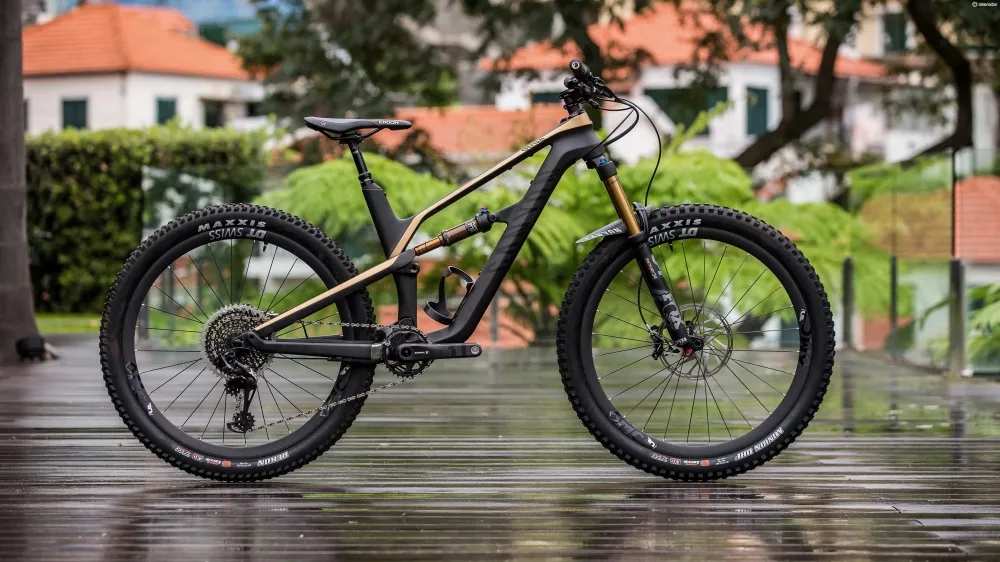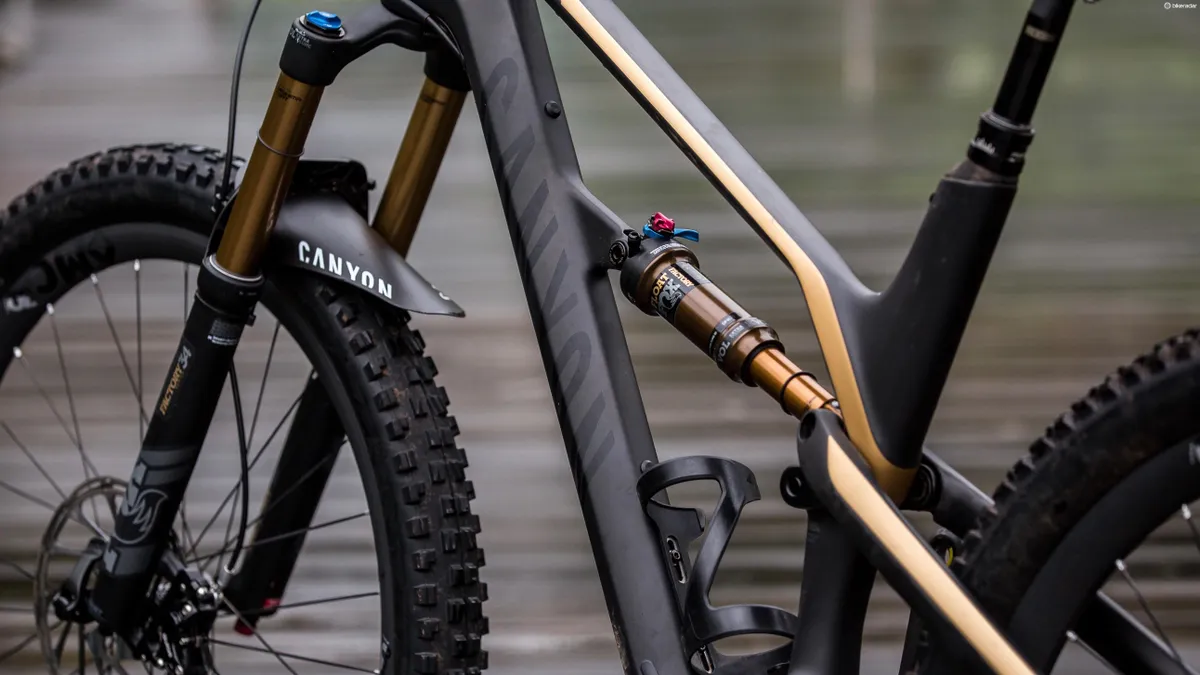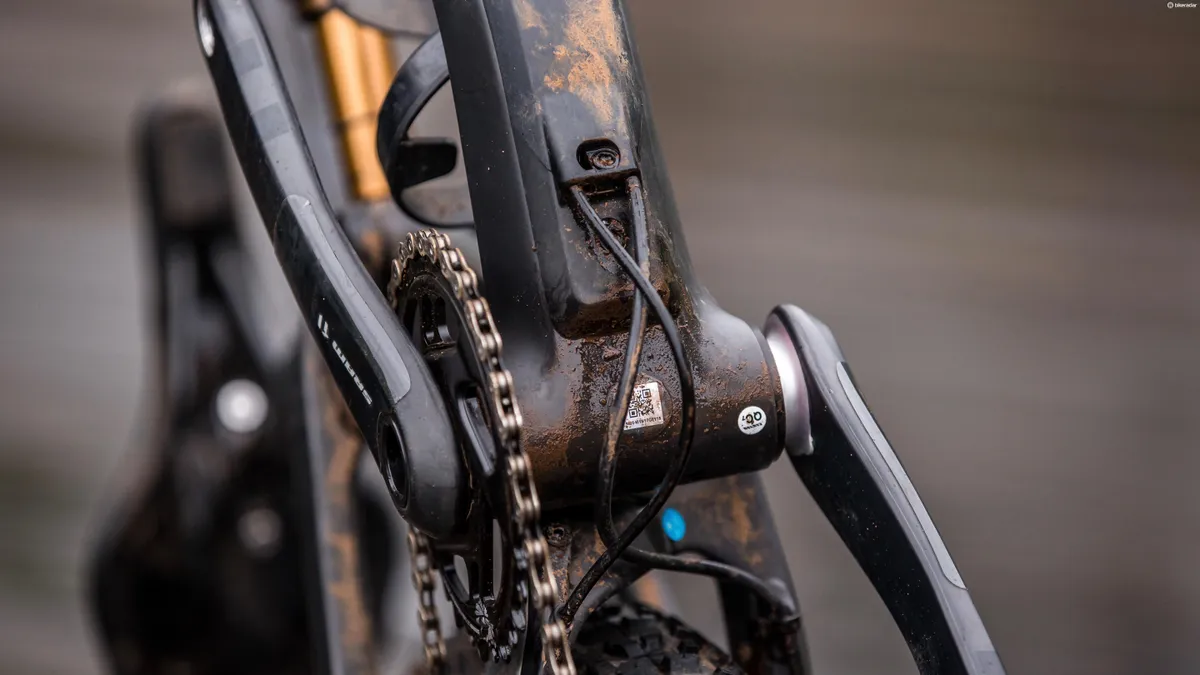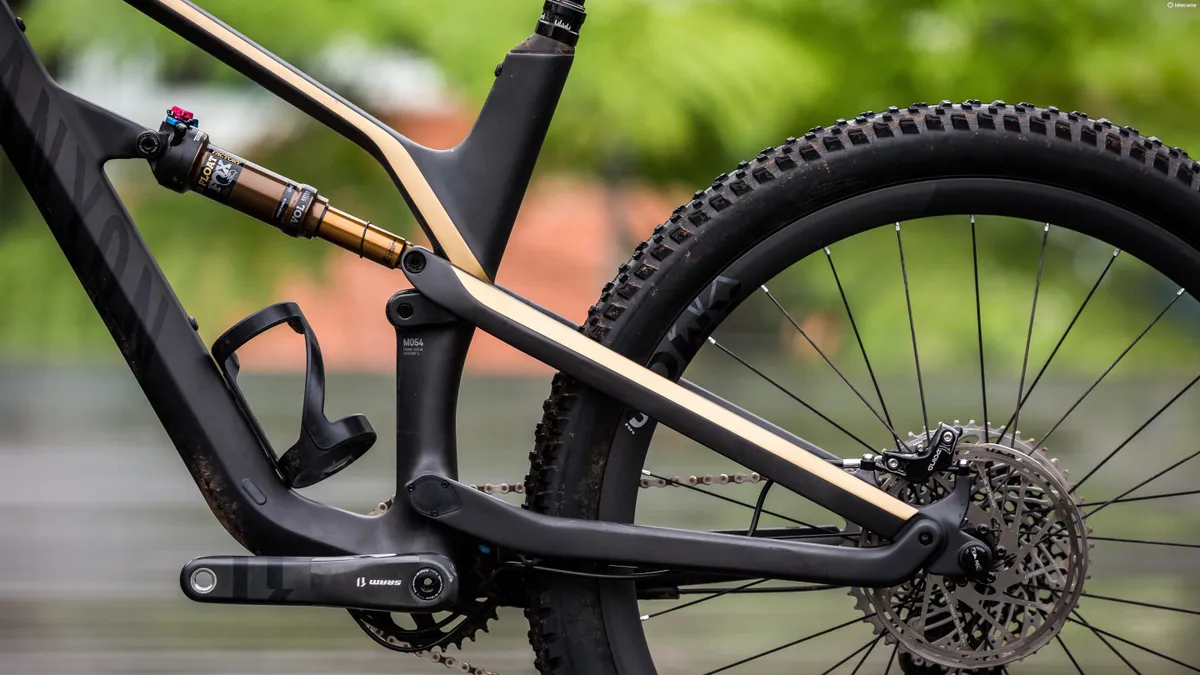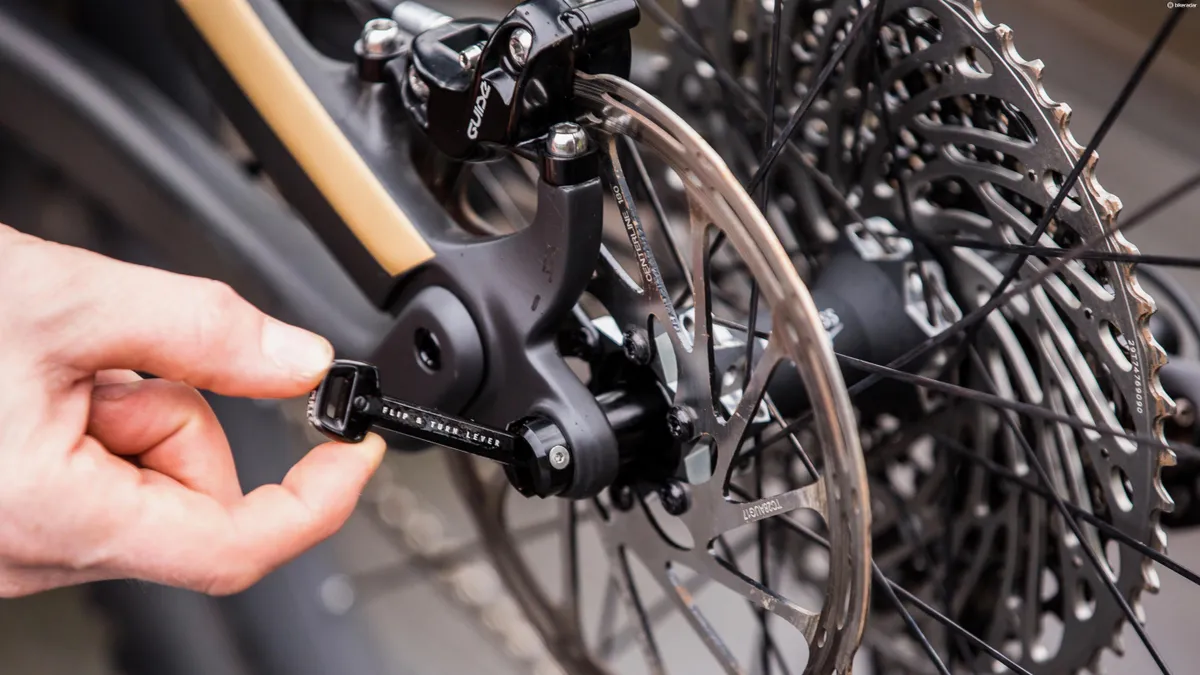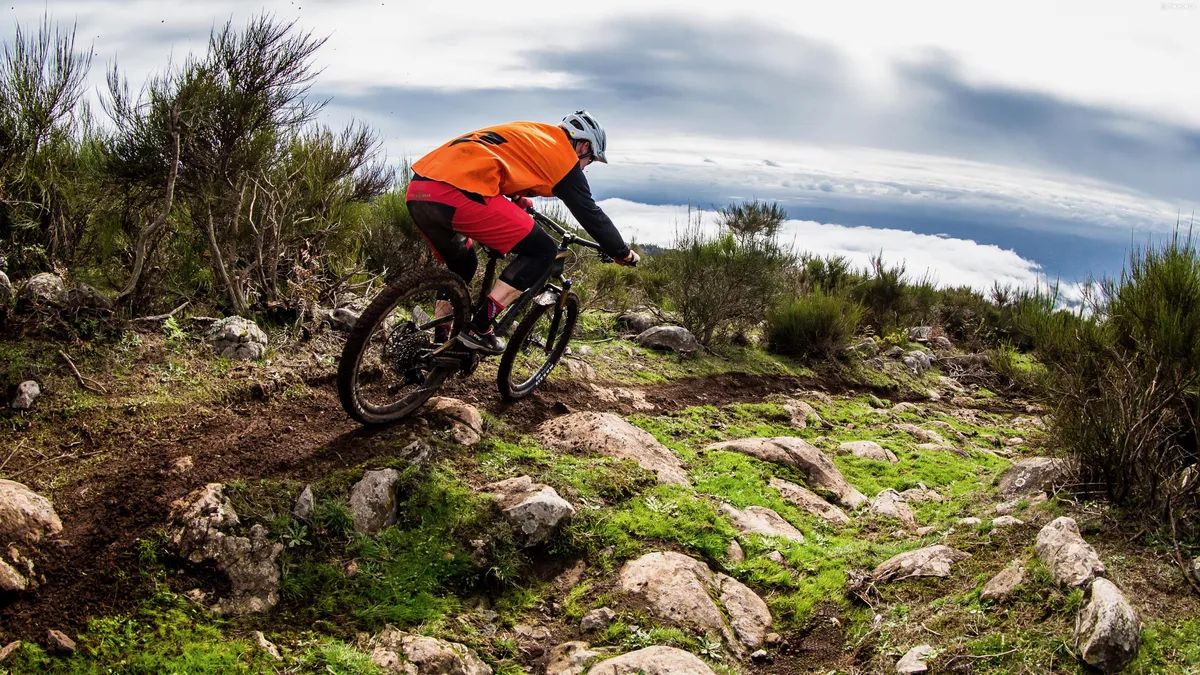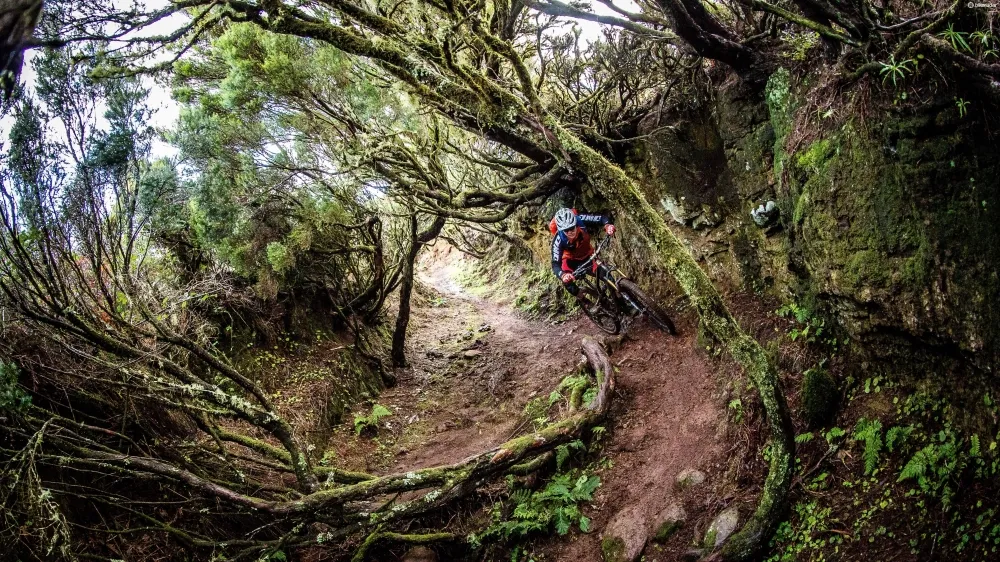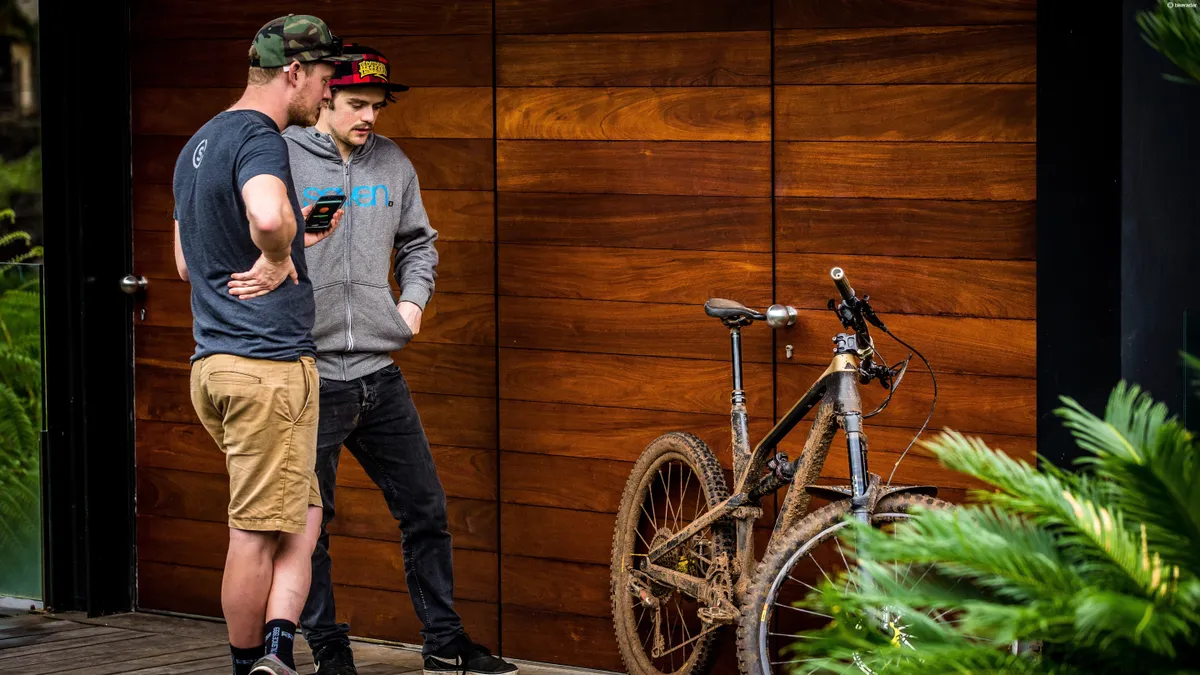We make no bones about our appreciation of the Canyon Spectral at BikeRadar. It’s its mid-travel trail bike, suitable for a wide array of riding styles and preferences. In 2017 the Spectral won BikeRadar’s Trail Bike of the Year award, thanks to its stellar trail taming performance and killer price.
Having been on the market for four years though, it was no surprise that when we landed in Maderia for the 2018 Canyon launch, there was a new Spectral to go and play on.
The concept is very much the same; it’s a 140mm frame with 150mm forks plugged in up front. The bike is very much designed as its trail bike (the Strive is meant to take on enduro races), but Canyon’s EWS racer Joe Barnes is quite happy to sling his leg over the Spectral when it comes to both UK trail shredding and international racing, and so Joe played a big part in the development of the bike.
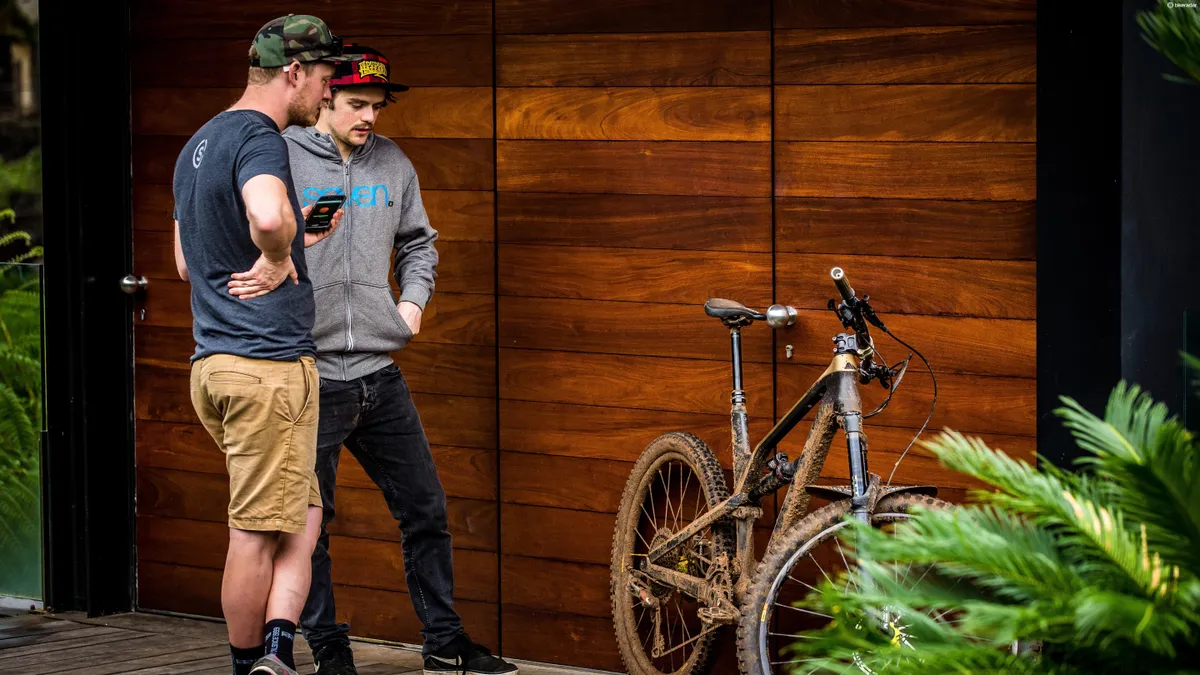
While the previous Spectral was a fun bike to ride, Canyon wanted to take what it had, add Joe's input in to the things he loved or wished for, and create a bike that serves the purpose of a fun, lively, all day trail bike.
As such, Canyon has totally re-designed the Spectral from the ground up with a brand new chassis and a focus on wider 2.6-inch tyres.
Canyon Spectral frame
The most distinct difference is the move away from a vertical shock placement to a horizontal one. Canyon says that this gives it more tuning options for the leverage of the shock to get towards the feel it's aiming for, as well as reducing strain, and therefore wear, on the linkage bearings.
Back in April 2016 Canyon launched its Sender DH bike, and while the linkage has obvious differences, Canyon wanted the overall aesthetic of the Spectral to match that of the Sender. It also took what it learnt from the development of the Sender's suspension kinematic and applied those lessons to the Spectral.
Its goal was to create a bike with a more sensitive beginning stroke, to improve grip, and then decrease the leverage curve through its travel, thus adding more and more support as the bike compresses.
This provides the rider with the ability to push through corners and pop over rocks and roots, giving it a dynamic and playful feel, and generate speed. Towards the end of the stroke the extra progression means riders are less likely to bottom out, to give you that little extra bit of security when things get really wild.

To get back up the hills, Canyon says that it's worked on balancing the anti-squat figures to give good climbing trail manners, without introducing too much pedal kickback. At the other end of the scale it's also tried to reduce anti-rise — the stiffening of suspension under braking — to keep the rear wheel as active as possible when the brakes are applied, especially at the top of the stroke when most of the effective braking is (apparently) done.
If all this sounds confusing, have a read of Seb's guide to suspension!
Wheelie good? (Sorry)
The other main area of difference is in the tyres. All, bar one, of the bikes come with 2.6-inch Maxxis tyres (Minion DHF (f), Rekon (r)) mounted on to 30mm internal width rims from DT Swiss (apart from the Enve rims found on the top-level model). The one bike that doesn't has a Mavic based wheel spec and uses the 2.4-inch Charge Pro and Quest Pro tyres, mounted to XA Pro wheels.
Canyon says that while really chunky rubber isn't so good for precise riding, 2.6-inch tyres give a good mix of traction and weight, as well as performing well when precision is needed.
Keeping the wheel size to 27.5 only (previous generation Spectrals were also available with 29-inch hoops) means that Canyon has the playful, quick handling feel it was after.
Canyon's class-leading trail bike gets a reboot for 2018
Shapes and sizes
Canyon says it didn't want to build a race bike first and foremost, so has built a bike that gives nice balance (in more ways than one). It wanted to build a bike long enough to be safe, stable and confident, but balance that with a fun, involving ride.
It also wanted to make sure there's a good balance of front to rear end length.
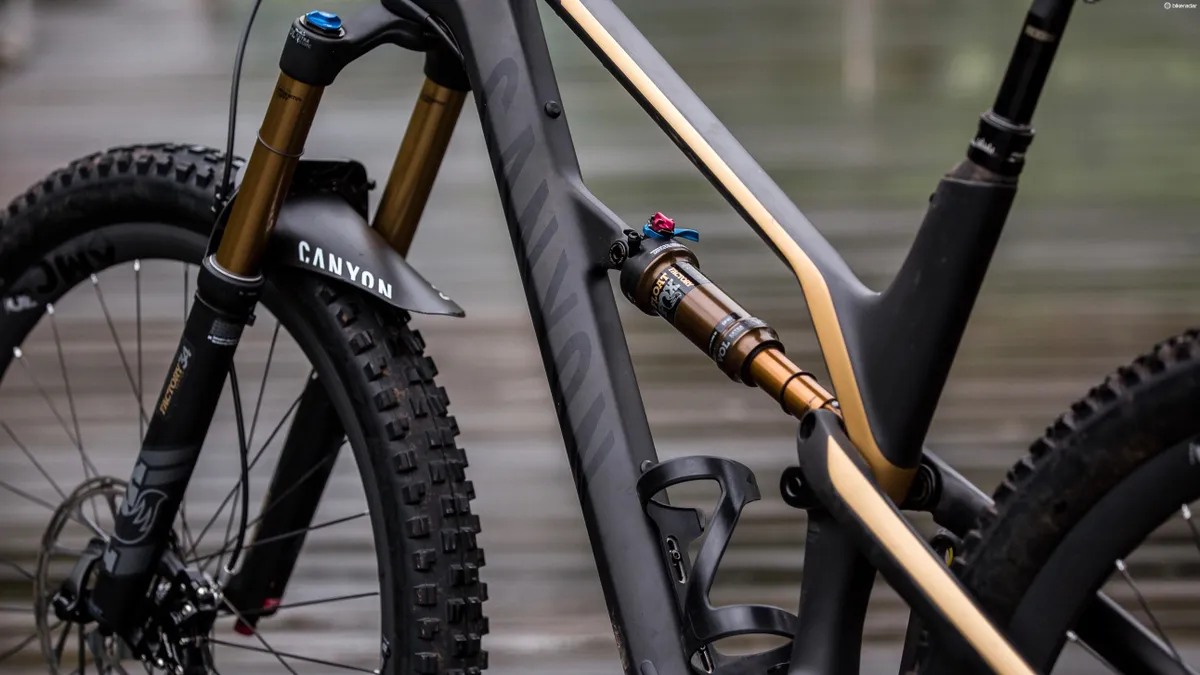
As such, you might be surprised to hear that the reach figure (in size large) has only increased by 5mm, to what could still be perceived as a relatively conservative 460mm. This is mated to a 430mm chainstay and 1,204mm wheelbase (again, size Large).
The head tube is placed at 66 degrees, and the seat angle 74.5. The head tube sizes jump in fairly big steps between sizes — the 147mm head tube (L) is 31mm longer than the Medium sized bike, for example.
Canyon has taken a slightly more detailed approach to sizing than some though, with the XS and S sized bikes featuring a lower bottom bracket and standover, as well as a shorter shock and adjusted leverage curve, to take into account the relative low weight of smaller riders.
Neat touches
While the core of the bike looks pretty tidy on first inspection, it's the little details that count, and Canyon hasn't been resting on its laurels.
Ever been frustrated to the point of tears with internal routing, but can't help but love clean, smooth lines? Well, the plastic shroud that runs from head tube to bottom bracket, sandwiching your hoses and cables securely in place without the need for fishing around or bleeding, should impress.
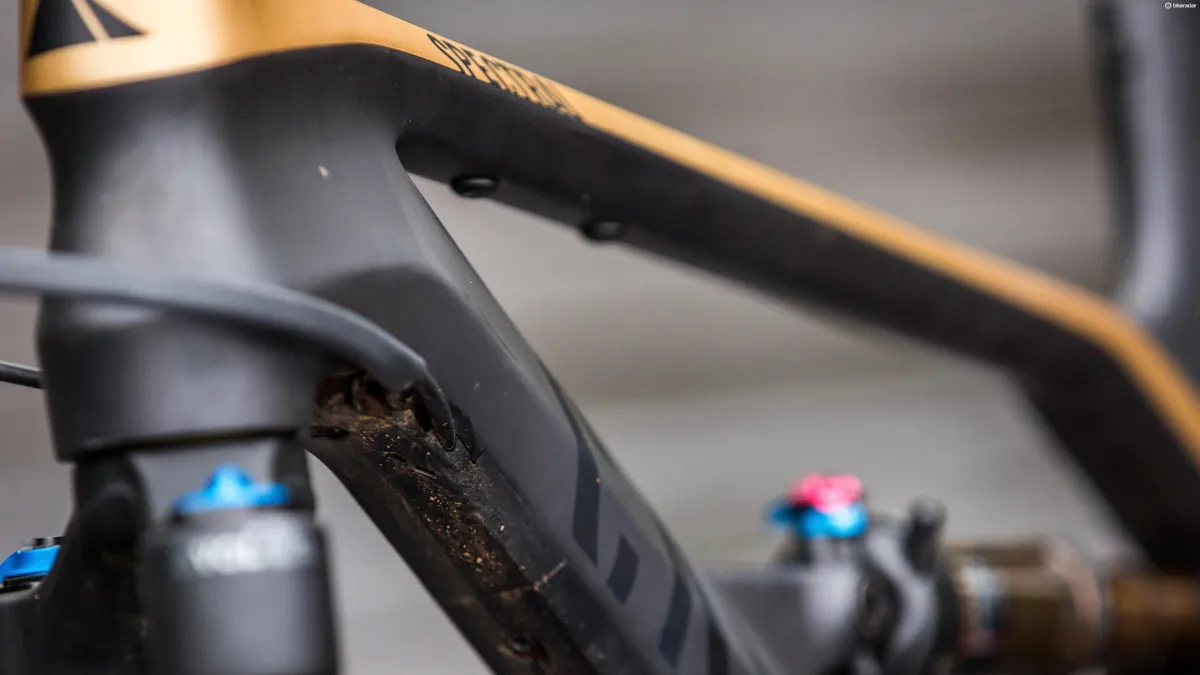
There's also much improved sealing on the main pivot bearings — something tested thoroughly (we're told) by Joe Barnes up in Fort William.
The seatpost clamp is an integrated unit, again with clean lines, rubber sealing and a better spread of clamping forces on the dropper post to reduce the likelihood of the clamping force interrupting the dropper's movement.
Finally, there's the IPU (Impact Protection Unit), which stops your bars spinning too far during a crash and prevents potential damage to your top tube, shifters and hoses.

Canyon Spectral models
There will be eight Spectral models, featuring full-alloy frames, carbon front, alloy rear and full carbon.
The first of three alloy Spectrals, the AL 5.0, comes in at €2,199 with a build that includes RockShox Pike RC and Deluxe RT suspension, a 2x11 Shimano XT/SLX drivetrain, Deore brakes, KS Lev dropper and DT Swiss wheels.
Three carbon/alloy versions are next, starting with the CF 8.0. at €2,999. This features Pike RC and Deluxe RT suspension, 12-speed SRAM GX Eagle drivetrain and Guide R brakes, and a RockShox Reverb stealth dropper.
There are two full-carbon models, the €4,999 CF 9.0 SL and the CF 9.0 LTD at €6,999. This one comes with a Fox 34 Factory fork, Fox Float DPS Factory Evol shock, SRAM XX1 drivetrain, Guide Ultimate brakes and Enve wheels.
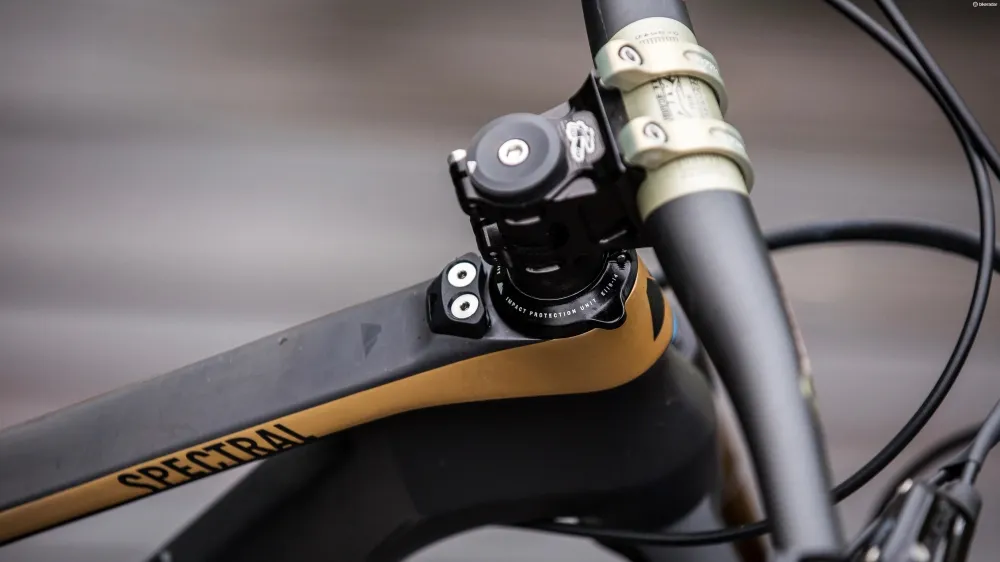
Our pick of the bunch? Quite possibly the Spectral AL 6.0, at €2,499. The Pike RC fork is a basic but proven performer, and is matched with the metric length Deluxe RT shock.
SRAM's GX Eagle 12-speed drivetrain is quickly becoming our go-to trail groupset. The Guide R brakes are basic, and while not the most powerful, are solid performers. DT Swiss's M1900 Spline wheels' quality belies their price, and you get a decent looking finishing kit from RaceFace, SDG and KS.
Canyo Spectral first impressions
I rode the second top Spectral CF 9.0 SL for a day in Madeira, so got a few quick first impressions of the bike while riding a wide range of trails, as fast as I possibly could.
The bike has a Fox 34 Factory fork and Float DPS Factory EVOL shock, SRAM X01 Eagle drivetrain and Guide RSC brakes. It rolls on DT Swiss XMC1200 carbon wheels, with the 2.6-inch Maxxis Minion DHF/Rekon tyres. The bike costs €4,999.
The first thing which struck me was the difference in feel in the rear suspension over the previous version. I was (and still am) a big fan of that Spectral, but the new model is a marked improvement.
On small trail chatter it wasn't quite like riding a plus bike at super low pressures, but the ride is incredibly smooth, no doubt a function of the better shock sensitivity from the higher ratio leverage curve, and also the bigger rubber under foot.
On bigger hits, the previous version could spike from time to time, but here, despite numerous dodgy line choices, the suspension coped admirably throughout a day of thrashing as hard as possible — I barely bottomed out the shock, despite my best (worst) efforts.
Despite a fair number of climbs, both prolonged and punchy, I never touched the shock's compression lever. I'm not a big masher of pedals, but even so, I do like a stable pedalling platform. This stability is found both climbing and when trying to accelerate down the trail.
When hitting rough trails it's fair to say that the suspension also remained pretty active while braking, improving traction and confidence. I say that with a little note, the trails were wet, and the Rekon rear tyre is not one that I would recommend on wet, muddy trails and not the best test of braking traction. More on the tyres in a minute, though.

The suspension is good, then. It's also hard to get too critical on the geometry. While some of my colleagues much prefer a longer bike, I'm pretty happy on a bike with a 460mm reach (my long-term Transition Scout has the same reach). However, the general progression of bikes is to go longer, and I feel that in a year or two the Spectral will be considered a 'short' bike.
If you like more progressive geometry, then perhaps have a good read of the geo charts and see if you can size up a bit.
Doing this, though, will mean you encounter that longer head tube, I'm a fan of a low-ish front end, and though I mostly ran the bike with a 5mm spacer under the stem, and could have dropped it lower, it did feel tall at the front end. This is fine on steeper terrain, but if you don't ride steep mountains a lot have a look at the geometry charts to see what you might like.
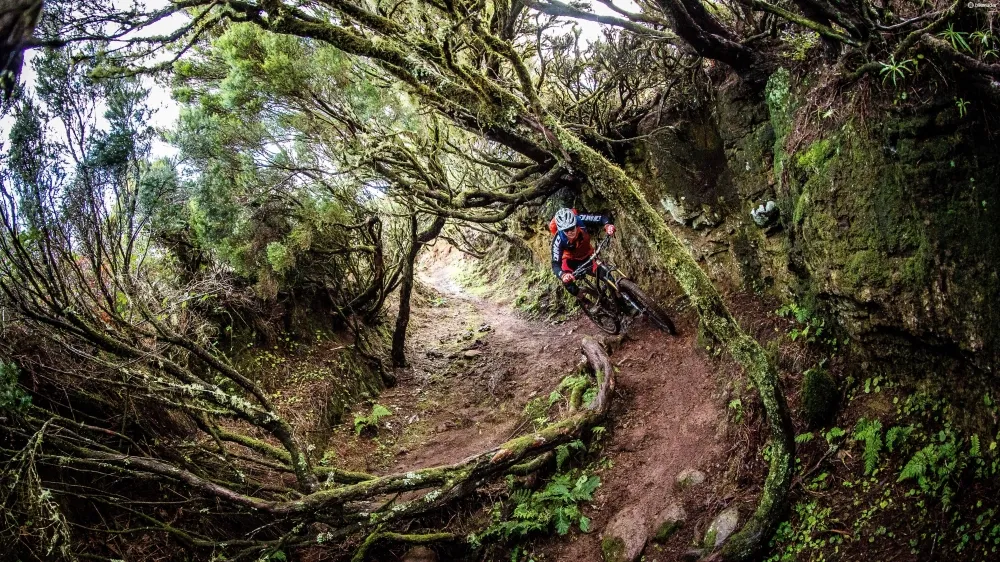
So, the tyres.
I didn't particularly get on with the 2.6-inch Maxxis rubber. The Spectral is a bike that does encourage you to push limits, and I felt that the tyres held me back a little.
Getting the balance between grip and tyre roll is trickier the wider you go, and I never quite had the confidence I'd have liked either up front or out back. The front rolled a little more than I'd like (though I got used to it through the day) and the rear didn't have enough tread to make the most of the conditions.
I feel that Maxxis's excellent Minion DHF/DHR 2.5-inch WT (Wide Trail) tyres would be a better match for the bike.
However, not everyone will agree with me on this, and, if I'm honest, it looks like Canyon is yet again offering incredible value for money in its builds. If it were me, I'd just budget another £100 / $120 / AU$150 for some new rubber when you purchase your bike.
